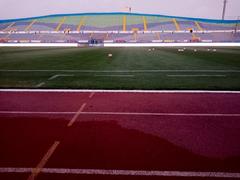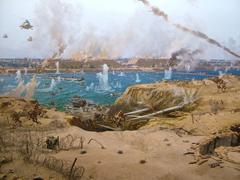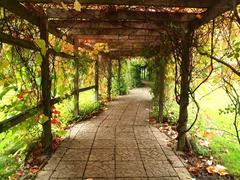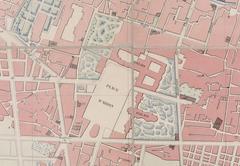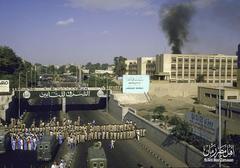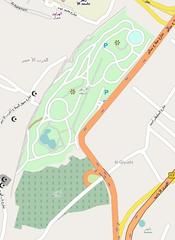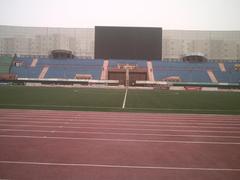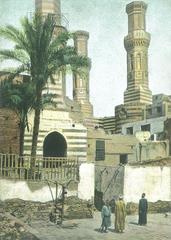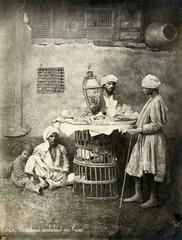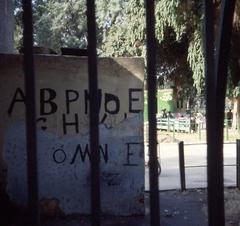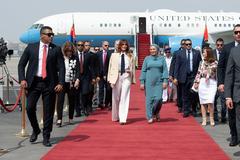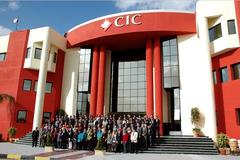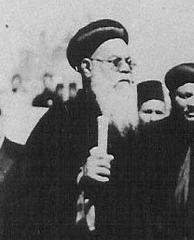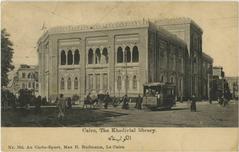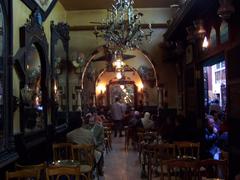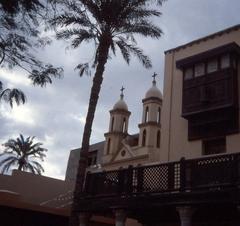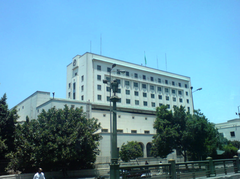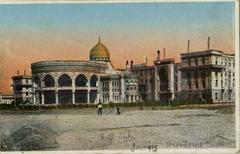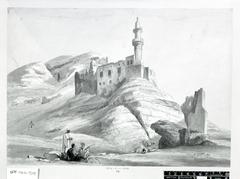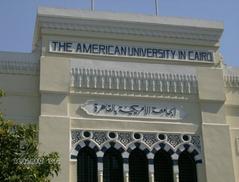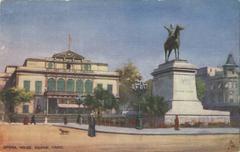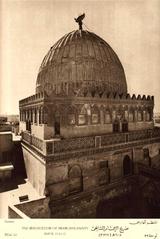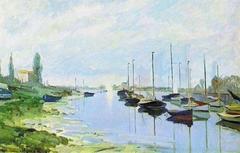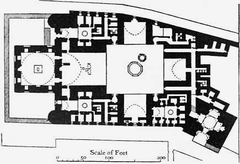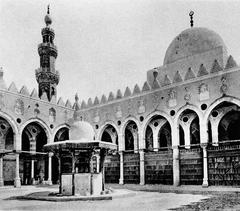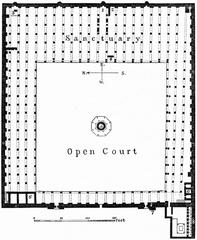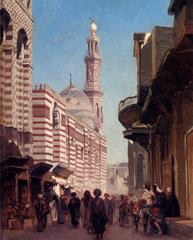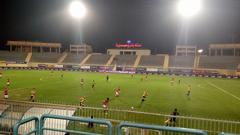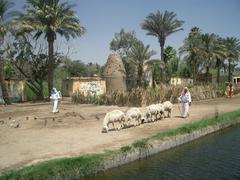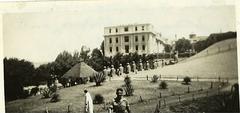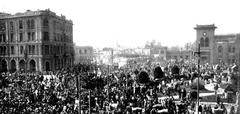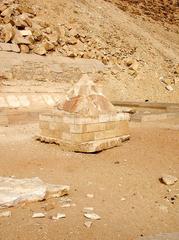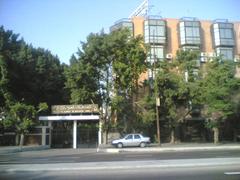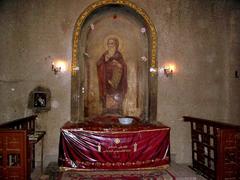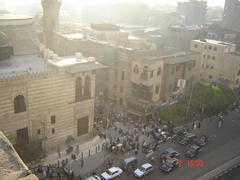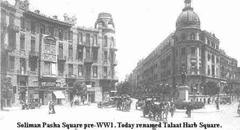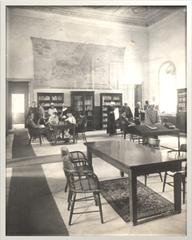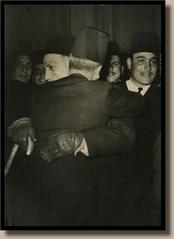Beit El-Umma Visiting Hours, Tickets, and Travel Guide in Cairo
Date: 14/06/2025
Introduction: Beit El-Umma and Its Historical Legacy
Beit El-Umma, meaning “House of the Nation,” is a landmark of Egypt’s modern history and a testament to the country’s nationalist spirit. Situated in Cairo’s Al-Mounira district, this elegant mansion served as the residence and political headquarters of Saad Zaghloul Pasha, a central figure in Egypt’s struggle for independence and founder of the Wafd Party. Beit El-Umma is not merely a preserved home but a symbol of Egypt’s quest for sovereignty, unity, and cultural pride. Its walls have witnessed pivotal moments, including secret meetings during the 1919 Revolution and the consolidation of Egypt’s independence movement (Majalla).
Today, Beit El-Umma operates as a museum, offering visitors an immersive journey into early 20th-century Egyptian political life, architectural grandeur, and the personal world of a revered national leader. Its meticulously preserved rooms, gardens, and extensive collections transport guests to an era when the ideals of freedom, modernity, and national identity were fiercely debated and defended.
Contents
- Beit El-Umma: Historical Overview
- Saad Zaghloul and the Nationalist Movement
- Architectural Highlights and Museum Layout
- Permanent and Temporary Exhibitions
- Visiting Hours, Tickets, and Accessibility
- Visitor Experience: Tours, Amenities, and Travel Tips
- Frequently Asked Questions (FAQ)
- Summary & Recommendations
- Sources
Beit El-Umma: Historical Overview
Beit El-Umma was originally the private residence of Saad Zaghloul and his wife, Safiyya Hanim, daughter of Prime Minister Mustapha Fihmi Pasha. The mansion soon became a center for Egypt’s nationalist movement, hosting Wafd Party meetings and gatherings of intellectuals, activists, and reformers. Its name reflects its pivotal role during the 1919 Revolution, when it became a rallying point for Egyptians fighting for independence from British colonial rule (Majalla).
After Zaghloul’s death in 1927, the house was transformed into a museum to honor his legacy, showcasing personal memorabilia, original furnishings, political documents, and photographs that capture the social and political climate of early 20th-century Egypt.
Saad Zaghloul and the Nationalist Movement
Saad Zaghloul (1858–1927), born in Ibyana, rose from modest origins to become a leading voice for Egypt’s independence. Educated at al-Azhar and influenced by reformers such as Sheikh Jamal al-Din al-Afghani and Mohammad Abdo, Zaghloul championed constitutional reform and modernization.
Beit El-Umma was not only his home but also the nerve center for the Wafd Party, which spearheaded Egypt’s nationalist movement. It was here that Egypt’s first constitution was debated, and strategies for resistance were mapped out. Safiyya Hanim, affectionately called “Mother of Egyptians,” played an active role, hosting gatherings and encouraging women’s participation in the movement (Osha Tours).
Architectural Highlights and Museum Layout
Exterior and Gardens
The mansion’s façade blends European and traditional Egyptian styles, with ornate ironwork, arched windows, and lush gardens that provide a tranquil escape from the city. A bronze statue of Saad Zaghloul by Mahmoud Mokhtar welcomes visitors at the entrance (Daily News Egypt).
Interior Features
- Central Courtyard: A hallmark of Egyptian residential architecture, the courtyard offers light and ventilation, surrounded by native flora and decorative tiles.
- Reception Halls: Lavishly furnished in Art Nouveau and Louis XV styles, these rooms hosted political meetings and social gatherings.
- Private Quarters: Bedrooms and living areas display period furniture, Zaghloul’s personal effects, and family photographs.
- Library and Study: Houses over 5,000 books in Arabic, French, and English, along with rare manuscripts and annotated works.
- Dining Room: Features imported European furniture, fine china, and silverware reflecting the cosmopolitan tastes of Cairo’s elite (Osha Tours).
Decorative Arts
Original hand-carved wooden furniture, stained glass, Persian carpets, and Egyptian textiles adorn the rooms. Paintings, calligraphy, and gifts from admirers contribute to the unique ambiance of the house (CitySeeker).
Permanent and Temporary Exhibitions
- Personal Artifacts: Displayed throughout the museum, including clothing, eyeglasses, walking sticks, and handwritten letters.
- Political Documents: Letters, speeches, and original Wafd Party materials documenting Egypt’s fight for independence.
- Photographs: Archival images capturing major events, including Zaghloul’s exile and triumphant return.
- Temporary Exhibitions: Rotating displays feature political cartoons, rare books, and art related to the nationalist movement (Near Place).
Visiting Hours, Tickets, and Accessibility
Opening Hours
- Standard Hours: Tuesday to Sunday, 9:00 AM – 5:00 PM
- Closed: Mondays and public holidays
- Note: Hours may vary for special events or maintenance. Always confirm before your visit (Wanderlog).
Tickets
- Adults: 50–60 EGP
- Students/Seniors: 25–30 EGP (with valid ID)
- Children under 12: Free
- Where to Buy: On-site or via official online platforms (Egypt Tailor Made)
Accessibility
- Wheelchair Access: Limited to ground floor and gardens; upper floors accessible only via stairs (Daily News Egypt).
- Facilities: Clean restrooms, seating areas, and a cloakroom.
- Assistance: Staff available to help visitors with special needs.
Visitor Experience: Tours, Amenities, and Travel Tips
Guided Tours
Beit El-Umma offers guided tours in Arabic and English, providing in-depth insight into the site’s political history, architectural features, and personal stories of its inhabitants. Tours are highly recommended and can be booked at the ticket desk or through affiliated tour operators (Daily News Egypt).
Photography
Non-flash photography is allowed in most areas. Always check with staff regarding restrictions, particularly for sensitive artifacts (Egypt Tailor Made).
Dress Code
Modest, comfortable clothing is advised. October–April offers the best climate for visiting.
Getting There
- Address: Munira Kasr el-Eini, Al-Mounira district, Cairo
- Public Transport: Closest metro station is Sayeda Zeinab (10–15 min walk).
- Taxi/Ride-Sharing: Uber, Careem, and regular taxis are widely available; have the address written in Arabic for convenience (TripExpert).
Amenities
- Restrooms: Available on site
- Seating: In gardens and interior rooms
- Gift Shop: Offers books and memorabilia
- Food: No on-site café, but nearby local eateries are plentiful.
Safety & Security
The museum is protected by high walls and security staff. As in any busy city, remain mindful of your belongings.
Frequently Asked Questions (FAQ)
Q: What are Beit El-Umma’s visiting hours?
A: Open Tuesday to Sunday, 9:00 AM – 5:00 PM; closed Mondays and public holidays.
Q: How much are tickets?
A: Adults: 50–60 EGP; students/seniors: 25–30 EGP; children under 12: free.
Q: Is the museum wheelchair accessible?
A: Accessibility is limited to the ground floor and gardens; upper floors are only accessible by stairs.
Q: Are guided tours available?
A: Yes, daily tours in Arabic and English; book at the ticket desk or through tour operators.
Q: Can I take photos inside?
A: Non-flash photography is generally allowed except in restricted areas.
Q: How do I get there?
A: By metro (Sayeda Zeinab station), taxi, or ride-sharing services.
Q: What other sites are nearby?
A: The Egyptian Museum, Tomb of Saad Zaghloul, Gayer-Anderson Museum, and Museum of Islamic Art.
Summary & Visitor Recommendations
Beit El-Umma stands as a monument to Egypt’s nationalist movement and the legacy of Saad Zaghloul. Its beautifully preserved architecture, rich collections, and engaging exhibitions make it a highlight of Cairo’s cultural landscape. While accessibility is somewhat limited due to its historic structure, the museum offers a welcoming and informative environment for all visitors. Combining your visit with nearby attractions creates a comprehensive Cairo experience. Use official resources or the Audiala app for guided tours, latest events, and travel tips.
Images and Media
Alt text: Entrance to Beit El-Umma museum with grand iron gate and garden.
Alt text: Bronze statue of Saad Zaghloul by Mahmoud Mokhtar in the garden of Beit El-Umma.
Alt text: Art Nouveau dining room inside Beit El-Umma museum.
